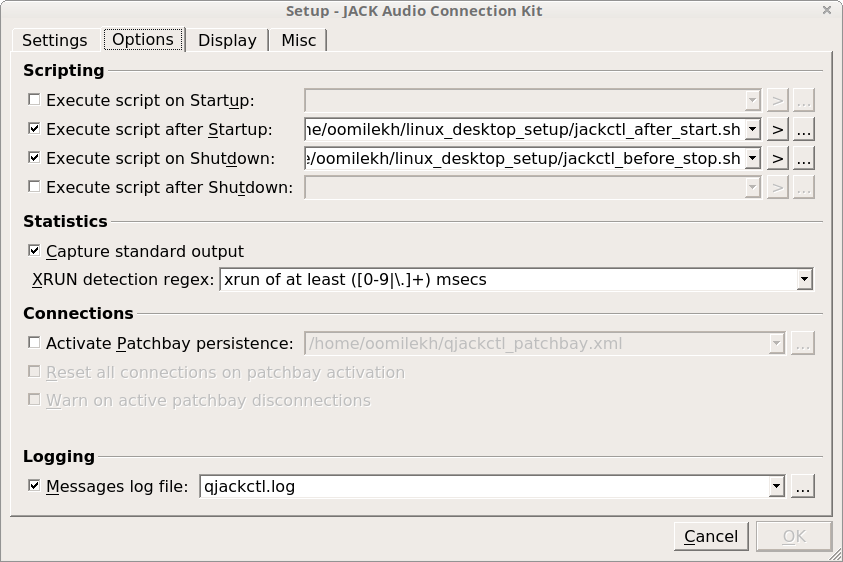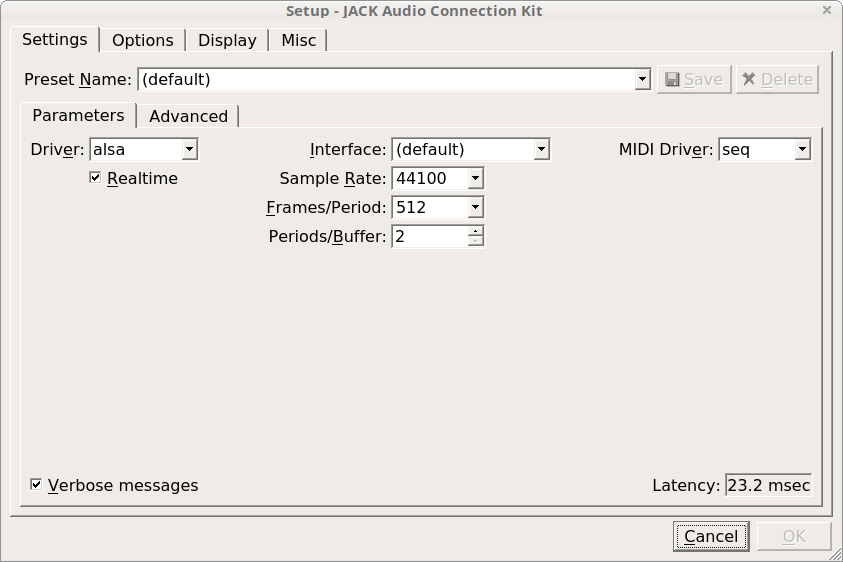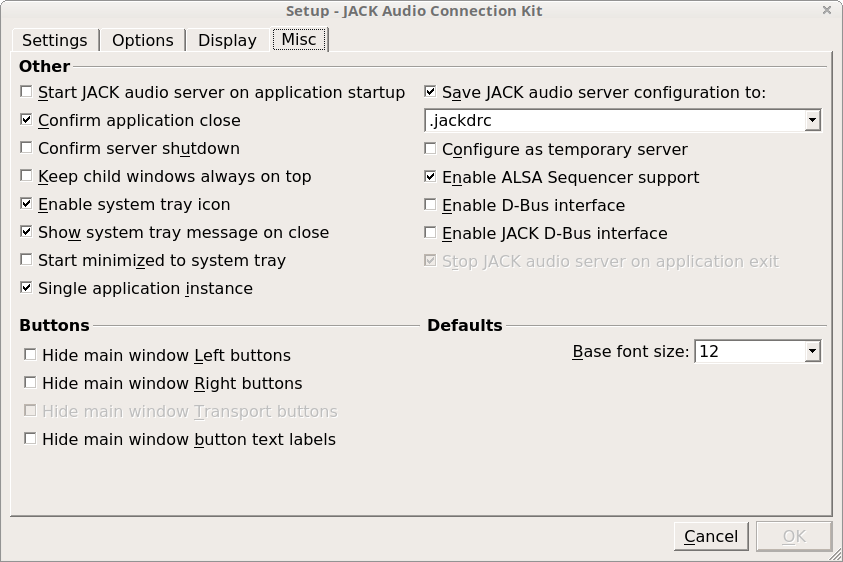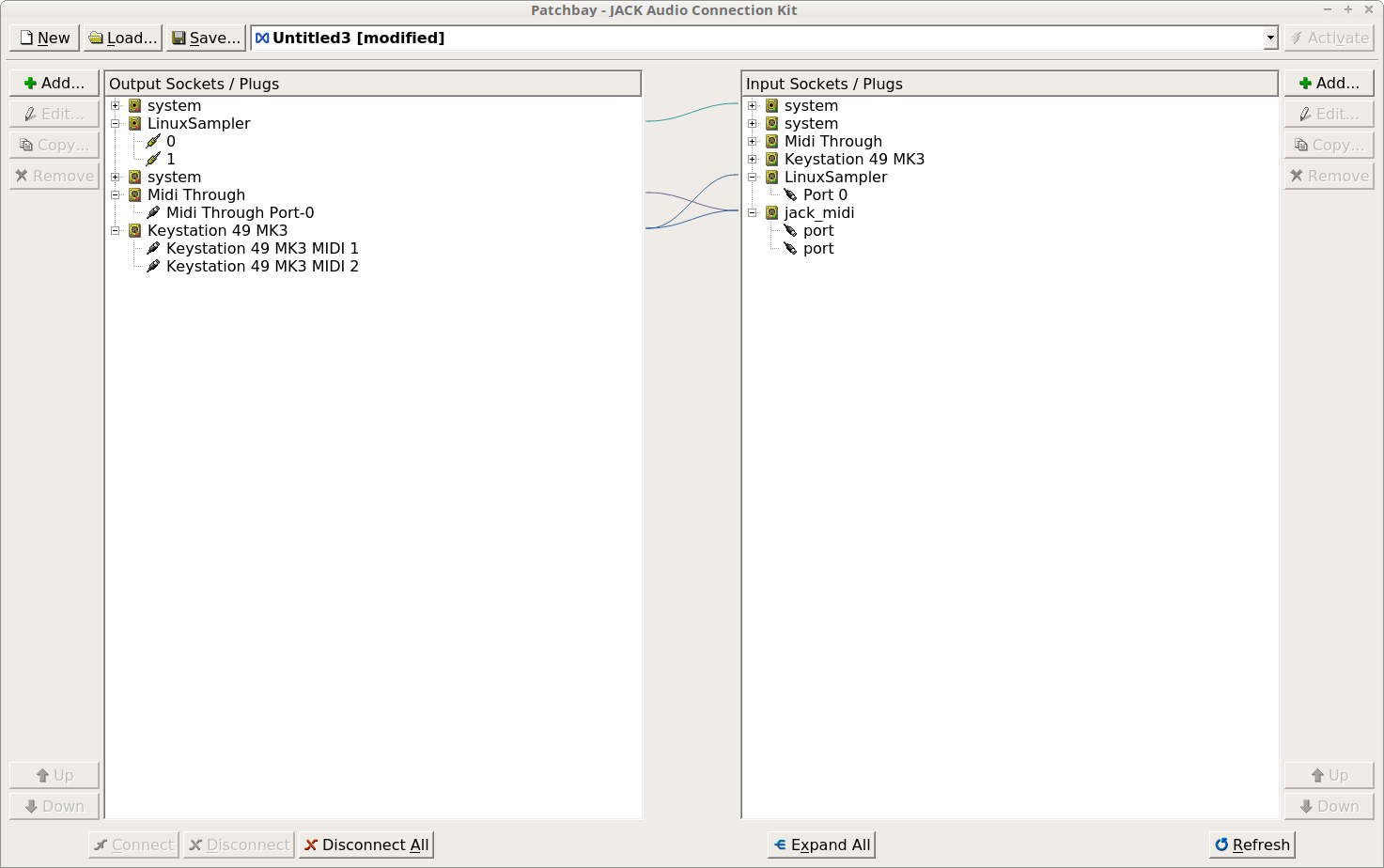linux_desktop_setup
Notes on Linux desktop setup
Project maintained by funduck Hosted on GitHub Pages — Theme by mattgraham
Sound
Written for HP Omen laptop and Linux Mint 18
Remove clicking noise
How to use JACK with pulseaudio
Set up midi keyboard and sampler
Remove sound clicking
I had it from the very start or may be after power management adjustments.
Add to /etc/modprobe.d/alsa-base.conf
options snd-hda-intel power_save=10
For some reason I have this script that should be executed with sudo
hda-verb /dev/snd/hwC0D0 0x20 SET_COEF_INDEX 0x67
hda-verb /dev/snd/hwC0D0 0x20 SET_PROC_COEF 0x3000
But these days it’s all fine without it
JACK with PulseAudio
Problem arised when I switched to JACK as main audio server. JACK and PulseAudio both use ALSA on low-level and they block each other.
Recipe source on askubuntu
Install JACK and module to route PulseAudio to JACK
apt install jack jackd2 libjack-jackd2-dev pulseaudio-utils pulseaudio-module-jack
Configure qjackctl setup->options
script after startup
pactl load-module module-jack-sink
pactl load-module module-jack-source
pacmd set-default-sink jack_out
script before shutdown
pactl unload-module module-jack-sink
pactl unload-module module-jack-source

This way when you start jack server in qjackctl, pulseaudio will use it (but in player you have to pause/play).
And when you stop jack, pulseaudio will fall back to direct use of sound card instantly.
When playing audio, for example in Firefox, one should see

And last, to control volume use alsamixer
MIDI keyboard with sampler
Set MIDI driver seq in qjackctl parameters

Enable ALSA sequencer

Compile LinuxSampler with JACK, for that you’ll need
apt install libjack-jackd2-dev
Start JACK audio output channel in JSampler (LinuxSampler GUI)

Connect MIDI keyboard to LinuxSampler port and LinuxSampler to system like this

You can save configuration in JSampler as script and execute it directly in LinuxSampler.
Check here
Switch to headset mic
This is how to automatically switch the microphone on plug/unplug:
acpi_listen is the tool to detect when you plug/unplug the headset. This is what it detects:
jack/headphone HEADPHONE unplug
jack/headphone HEADPHONE plug
pulseaudio is where we can switch source ports
In my system to select headset microphone:
pacmd set-source-port alsa_input.pci-0000_00_1f.3.analog-stereo analog-input-headset-mic
To select internal microphone:
pacmd set-source-port alsa_input.pci-0000_00_1f.3.analog-stereo analog-input-internal-mic
You can use pacmd list-cards to get a list of sources names and ports names. You can also use the terminal auto-complete feature to help craft the commands. Now, let’s bring everything together:
Switch to root with sudo su and create the script /etc/acpi/headset-microphone.sh
#!/bin/sh
export PULSE_RUNTIME_PATH="/run/user/1000/pulse/"
if [ "$1" = plug ]; then
sudo -u you -E pacmd set-source-port alsa_input.pci-0000_00_1f.3.analog-stereo analog-input-headset-mic
else
sudo -u you -E pacmd set-source-port alsa_input.pci-0000_00_1f.3.analog-stereo analog-input-internal-mic
fi
be sure to:
change you to your username
replace the pulseaudio source and ports with your values
make the script executable, `chmod a+x /etc/acpi/headset-microphone.sh`
then create the event listener, creating a file ´/etc/acpi/events/headset-microphone-plug´:
event=jack/headphone HEADPHONE plug
action=/etc/acpi/headset-microphone.sh plug
and the unplug event listener, creating a file ´/etc/acpi/events/headset-microphone-unplug´:
event=jack/headphone HEADPHONE unplug
action=/etc/acpi/headset-microphone.sh unplug
and, as last thing, restart the acpi listening events service
systemctl restart acpid.service